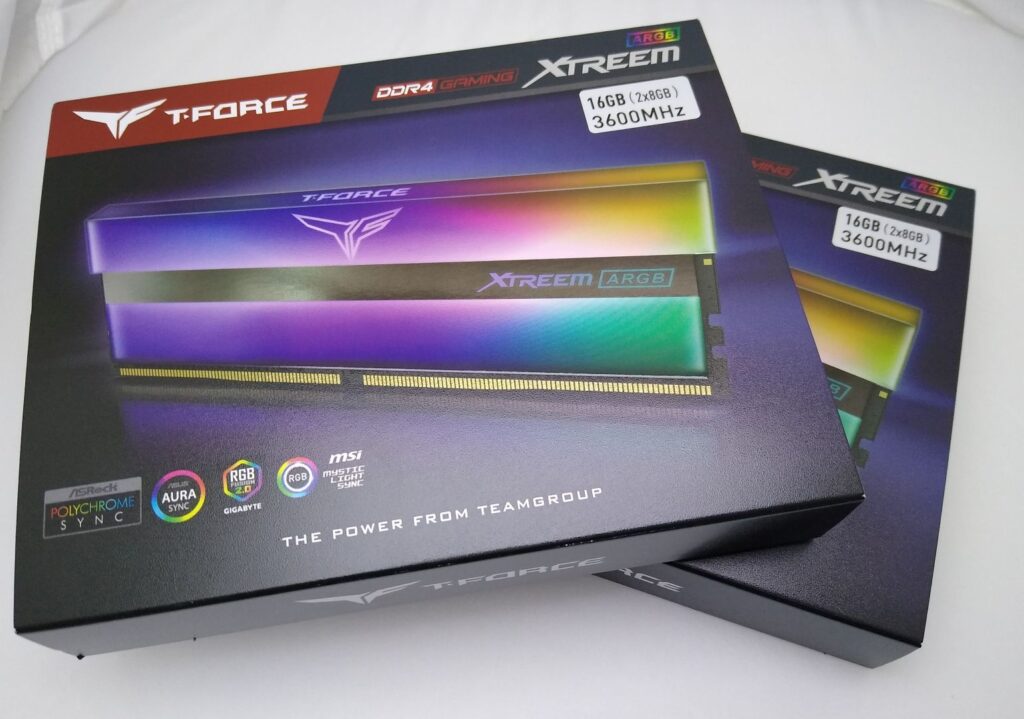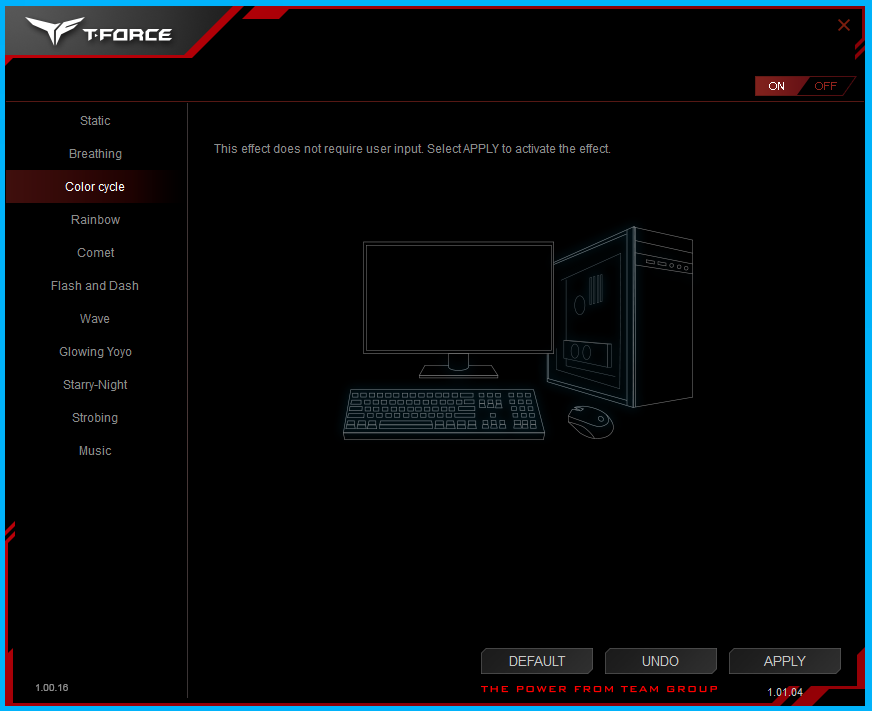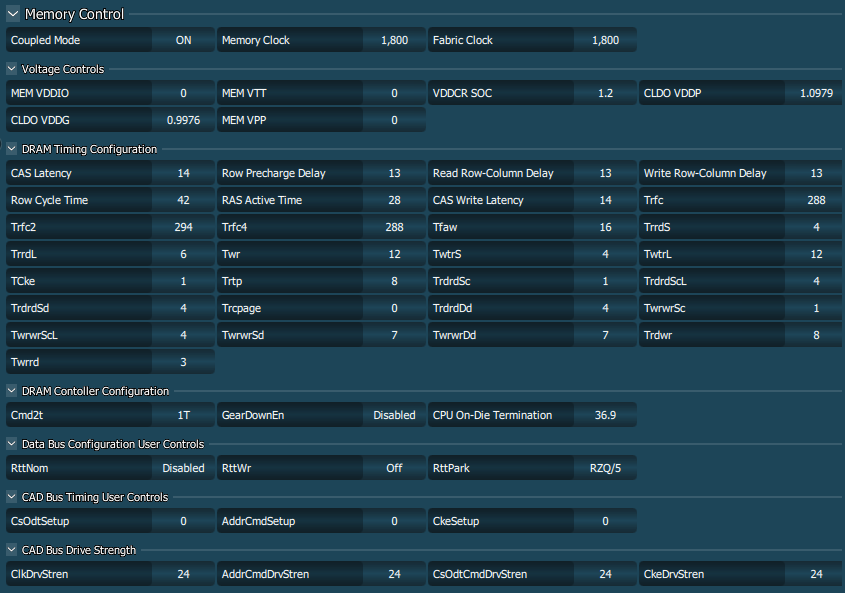Corsair, a name we know all to well in the DRAM market. Well, today is no different with their release of the new DDR5 Dominator Titanium line. A line being touted as "Extremely Rare & Meticulously Crafted", we felt very privileged when Corsair was kind enough to send us along a 64GB Kit clocked at 6000MT/s (EXPO). Let's crack into this and see what we find.

In December of 2019 TeamGroup released the T-Force Xtreem ARGB memory modules. This addition to the companies gaming memory lineup features a radical new design with a mirrored heat spreader that is also opaque and illuminated from behind. In the modern DDR4 arena, companies are constantly breaking new ground with design elements to attract customers. They’ve done enough to attract our attention, but we’d also like to know how this TeamGroup memory kit performs.
Beyond just a flashy exterior, the T-Force Xtreem ARGB modules were designed to be fully compatible with both AMD and Intel platforms. Today we will be reviewing this new offering from TeamGroup and putting it to the test with overclocking.
Specifications and Features
The Xtreem ARGB is clearly oriented around RGB lighting. However, they offer some impressive performance based memory speeds to choose from. The T-Force Xtreem ARGB has been released with a preliminary product lineup, but it’s rumored that the series will be expanded in the future.
To make the Xtreem ARGB unique, TeamGroup developed and implemented new technologies for the heat spreader. It has a full mirrored surface on one entire side, top, and part of the second side. They didn’t stop with just a shiny surface though. Using the principles of optical reflection and penetrating light, they made the mirrored surface come alive and by illuminating it from behind with addressable RGB LEDs.
For the current retail Xtreem ARGB product line, refer to the table below.
Quick Features
- Full mirror light penetration
- Latest ARGB technology
- Aluminum alloy heat sink with high performance
- Supports Intel & AMD motherboards
- Selected high-quality IC
- OC profile support
- Energy saving with ultra-low working voltage
- Taiwan Utility PATENT (number: M584969)
Today, we will be evaluating the top B-Die based memory offering in the current retail lineup, the impressive 3600 CL14-15-15-35 memory kit. In the table below, we examine the particular details of our test memory. They provided two of this kit for our review.
Here is a closer look at the details. Below is a screenshot of Thaiphoon Burner, which is a wonderful free tool that allows one to read the Serial Presence Detect (SPD) firmware of the DRAM. The SPD information is critical in determining how the stick will perform and how the computer will recognize it out of the box.
As the Thaiphoon Burner screenshot shows, this specific kit of memory is composed of Samsung B-Die ICs.
Our review sample memory utilizes the modern A2 style PCB layout. This refers to the orientation of the eight ICs on the actual memory PCB itself. The type of IC is relevant because it can play a very substantial role in the relative overclocking ability on some motherboards.
Packaging and Product Tour
You know it’s going to be a premium product when it arrives in a box which is three times larger than required. Like the memory, the box itself has a mirror quality to it. With very-high quality printing and a unique mirrored finish on the packaging, we expect great things from the product hidden beneath.
Sliding off the colorful sleeve, we are greeted with an anti-tamper sealed box. Inside we find the prototypical plastic clamshell packaging that most of the DDR4 on earth is shipped in. TeamGroup also included a dust cloth and a sticker.
A Closer Look at the Xtreem ARGB
With the packaging out of the way, we can get down to the good stuff. Just by looking at the outside, you wouldn’t know this memory comes packed with addressable RGB. The Xtreem ARGB is uniquely different looking from all other RGB memory we see on the market today.
The overall heat spreader and light diffuser system is broken into two main parts. Because the memory IC’s are only located on one side, there is no need for a traditional heat sink all around the memory module. For cooling, TeamGroup implemented a black anodized strip of aluminum mounted directly to the chips. Hynix memory IC’s don’t produce any noteworthy heat, even when heavily overclocked. This type of cooling solution, while seemingly minimal, should be adequate to keep this memory running flawlessly for its entire life.
Everything else that is not associated with cooling, makes up the light diffuser system. As you can see in the pictures below, the color is blue with a strong purple tone.
TeamGroup takes it one step further and lights up practically the whole stick as well as providing that luxury-looking mirrored surface. The result is that the memory is a blue-colored mirror when the lights are turned off, and then completely transforms when the lights are on.
Xtreem ARGB Light Show
When the computer is turned on, or RGB activated, then the magic happens. The entire body of the memory stick comes alive with addressable RGB light. As you can see below, the light is located at the center of the stick and emanates out from there via the built-in light diffuser. The result is quite stunning.
Software Control
In addition to the third-party software compatibility, TeamGroup offers its own standalone control software. The T-Force Blitz software gives you all of the control and synchronization capabilities that we have come to know and expect from RGB computer elements.
Software download: T-Force Blitz
Testing and Overclocking
The overall objective is to evaluate the memory from the perspective of daily usage. We will try to answer the question of what memory speeds produce the best results for overall performance and productivity. The approach is to first test the XMP 2.0 profile. Once we have established that the XMP profile is working on the test system, then the real fun begins as we evaluate the memory from an overclocking perspective.
Additionally, we will briefly examine how Ryzen Threadripper responds to memory overclocking and examine what types of overclocks can be carried out with reasonable voltage levels. To accomplish this task, we will turn to benchmark programs to examine the performance of the memory and overall system under various conditions.
Below is the test system we will use to evaluate the memory.
As is the case with all overclocking adventures, your results may vary, so proceed only if you assume all risk.
XMP Testing
TeamGroup designed the Xtreem ARGB to work no matter which platform you are running. Whether it’s the new AMD Ryzen 3000 series or Intel’s current Z390, you can buy with confidence. This memory has been extensively tested with all platforms. That being said, most budget motherboards aren’t designed for high-frequency with tight timings.
As you can see below, the one-click XMP memory profile worked flawlessly. Even though the XMP was designed for 16GB total, we had no problem doubling that and running 32GB. In this case, the FCLK = 1800 MHz and UCLK = 1800 MHz.
Overclock 1 ~ 3600 MHz CL14-13-13-28 + Tight Sub Timings @ 1.50 V
For the first overclocking attempt, we tried to make the timings tighter and more efficient. Due to the fact that our test kit is composed of Samsung B-Die IC’s, we had exceptionally high hopes for this memory. While the kit is already incredibly efficient with exceptionally low timings, we were substantially tweak the timings even further.
Below is the resulting timing profile and AIDA64 test. FCLK = 1800 MHz; UCLK = 1800 MHz
Overclock 2 ~ 4200 Mhz CL16-16-16-32 + Tight Sub Timings @ 1.45 V
For the next overclocking attempt, we attempted to increase the frequency while still maintaining tight timings. We managed to overclock the frequency by a whopping 600 MHz. To do this we needed to increase the primary timings slightly, but we managed to make the sub timings more efficient than XMP.
Below is the resulting second overclock test case with FCLK = 1800 MHz and UCLK = 1050 MHz.
Overclock 3 ~ 4533 Mhz CL18-20-20-44 + Loose Sub Timings @ 1.45 V
In the third and final overclocking test, the goal was to take the frequency to the limit at the cost of timings. We gained 933 MHz of frequency, but with substantially increased primary timings. In some cases memory frequency scales more than tight timings do. We wanted to see how this approach impacted performance.
Below is the resulting first overclock test case with FCLK = 1800 MHz and UCLK = 1133 MHz.
Benchmark Results
First of all, we used AIDA64 Cache and Memory Benchmark. In the graph below, it’s clearly visible that each of the four different memory speeds compared had a noticeable change in the benchmark result.
How did our memory overclocking impact the overall performance? In total, our overclocking endeavors had a noteworthy impact on performance. It comes down to how we interpret the results and which tests we choose to look at. For the copy performance, increasing the frequency had a clearly massive effect.
Across the board, our attempt at creating a super-tight memory profile at 3600 Mhz did not show favorable results in this benchmark. As our results show, the AIDA64 benchmark clearly favors raw memory frequency above everything else.
Next up is Geekbench 4, and it has proven itself to be an excellent tool for determining the real-world performance of the system being tested. This type of benchmark is purely 2D calculation-based and there is no graphical processing element. Therefore, it’s a great analytical tool to evaluate memory performance.
Geekbench 4 tells a similar story to AIDA64, but in reverse. Here our overclocking endeavors show that tight timings increase the score more than frequency does, respectively.
Next, we will examine the performance using a few of the memory benchmark tests offered within the SiSoftware Sandra suite of benchmarks.
The memory bandwidth test in the SiSoftware Sandra suite followed the same trend as geekbench 4.
The next benchmarks we will examine are ones centered around 3D rendering and games. The Futuremark 3D Mark suite of benchmarks is a real-time, graphical-rendering benchmark which also contains an element of memory and CPU testing. For each of the benchmarks, from Fire Strike Extreme to Time Spy Extreme, we will only examine the CPU/memory testing portion and disregard the graphical test elements.
The 3600 CL14-13-13 tight timing profile was the clear winner here. While all of our overclocking endeavors did show favorable results, this grouping of benchmarks clearly favor tight timings.
Extreme Overclocking
Certain benchmark programs such as Geekbench 3 have a direct relationship between memory overclocking and the overall score. For competitive overclockers, memory overclocking is critical for the overall score. Here we take a look at what can be accomplished by taking overclocking to an extreme level. With potentially destructive voltages of 2.00+ V, the memory comes alive and allows truly astonishing timings and frequency.
Please note, this is not at all stable for daily use and requires that the physical memory be limited so that the OS can only use around 4 GB of the available 32 GB. Below is the result of from our overclocking efforts. We increased the frequency by a staggering 1000 MHz and considerably tightened the secondary and tertiary timings.
With considerable risk of damaging the memory, you might be asking yourself if it’s worth it? In the graph below, we depict the results of our Geekbench 3 tests. Looking at the total score, we saw at least a 5.4% gain in performance. In terms of competitive overclocking, this is truly an astronomical performance gain from simply memory timings alone. For daily tasks however, the risks far outweigh the reward.
Conclusion
Yet again, TeamGroup brings something completely new and exciting to the computer world. The T-Force Xtreem ARGB combines the best that modern DDR4 IC’s have to offer with a truly revolutionary design. The heat sink design is classy and elegant with the mirrored blue finish. We can appreciate the memory styling even without any of the RGB elements. However, when the RGB lights on, you know you’re looking at something special. This is not the typical aluminum heat spreader with a plastic light diffuser on top, but an original creation that is sure to make heads turn.
From a quad-chanel overclocking perspective they are truly astonishing. With a daily stable voltage of 1.50 V or less, we were able to overclock the frequency by nearly 1000 MHz. When it came to making the memory run faster timings, we had no problems running 3600 CL14-13-13 with very tight sub timings. The TRX40 platform proved to be tricky for memory overclocking. Overall, we found it best to keep the frequency locked in at 3600 MHz, and simply change the timing profile to produce the best results.
While there are no retail listings for this memory at the moment, the MSRP is $246. That price point puts the Xtreem ARGB at the top of the market for this speed. Similar XMP rating of 3600c14 from companies such as G.Skill and Corsair are priced between $200-$230. Have they done enough to warrant the premium price tag? We will leave that for you to decide. However, our mind is made up, the T-Force Xtreem ARGB is hands down the most impressive overclocking and aesthetically pleasing DDR4 memory we have ever seen.
Thank you to TeamGroup for providing this memory for review.

Want to discuss this product or give your views and feedback from your own usage? Discuss on the ExtremeHW Forums
Like our content? Please consider Donating to help us to continue our writing.













































This Post Has 0 Comments